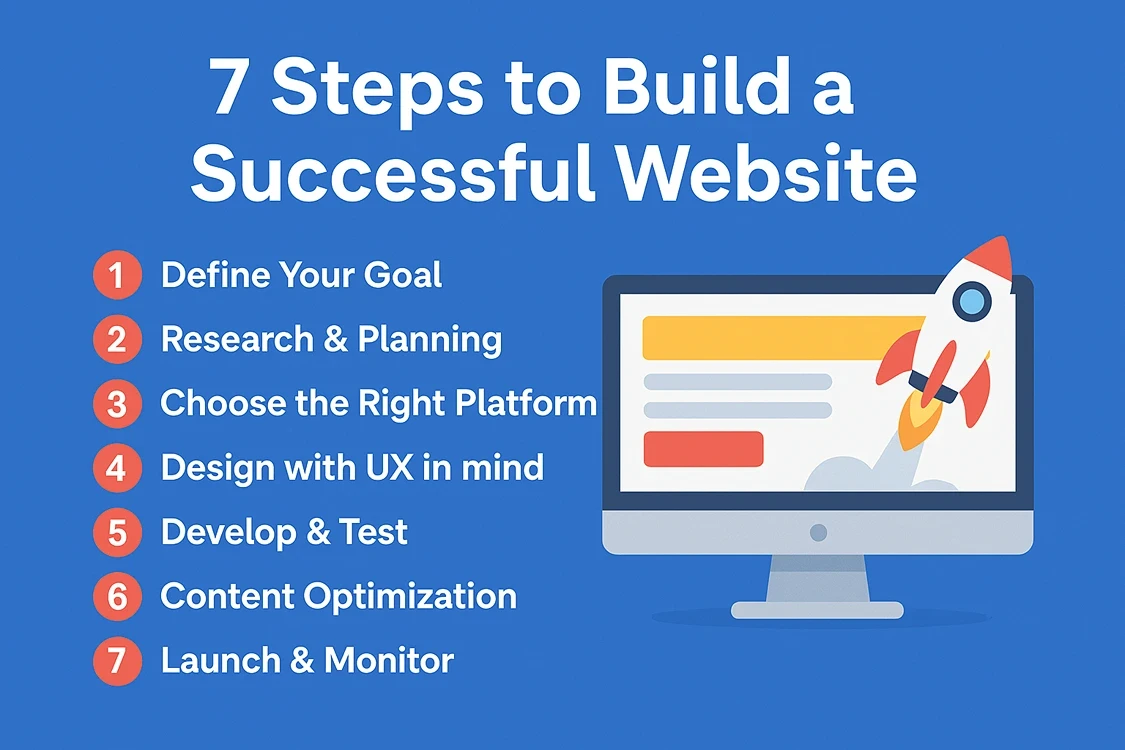In today’s digital-first world, a website is more than just an online presence — it’s the face of your brand, a powerful marketing tool, and often the first impression you make on potential customers. But building a successful website isn’t only about attractive visuals; it requires a strategic approach that combines planning, functionality, and continuous improvement.
Here are the 7 essential steps to create a modern, high-converting website:
Table of Contents
1. Define Your Goal
Every great website starts with a clear purpose.
- Do you want to sell products, generate leads, showcase your portfolio, or share knowledge?
- Identifying your main objective will shape every decision you make, from design to content.
A website without a defined goal is like a ship without a compass — it may look good, but it won’t get you where you want to go.
2. Research & Planning
Before writing a single line of code, research your target audience and competitors.
- Who are your visitors? What problems do they want solved?
- How do your competitors present their websites, and what gaps can you fill?
Creating a sitemap and wireframes at this stage ensures your website has a clear structure that supports both users and search engines.
3. Choose the Right Platform
Your platform determines how flexible and scalable your website will be.
- For beginners: platforms like WordPress, Wix, or Squarespace are user-friendly.
- For eCommerce: consider Shopify or WooCommerce.
- For advanced customization: a custom-coded site or frameworks like Laravel may be ideal.
Pick a platform that balances your technical skills, budget, and future growth plans.
4. Design with UX in Mind
A beautiful design is not enough — it must also provide an excellent User Experience (UX).
- Ensure your website is mobile-friendly and responsive.
- Use intuitive navigation so visitors can find what they need quickly.
- Focus on readability: clean fonts, proper spacing, and contrasting colors.
Remember: Good design is invisible — users should feel comfortable without having to think too much.
5. Develop & Test
Now it’s time to bring your design to life.
- Code your website or set up your chosen CMS.
- Add essential features like contact forms, payment gateways, or booking systems.
- Test thoroughly across different browsers and devices to ensure everything runs smoothly.
Bug-free performance builds trust with your audience from day one.
6. Content Optimization
Content is the backbone of your website.
- Write clear, engaging, and SEO-friendly content that aligns with your audience’s needs.
- Use compelling headlines, informative blog posts, and strong calls-to-action (CTAs).
- Don’t forget images, videos, and infographics — they keep users engaged.
Optimized content not only attracts visitors but also converts them into customers.
7. Launch & Monitor
The big day has arrived — but launching is just the beginning.
- Announce your website across social media, email newsletters, and other channels.
- Use analytics tools (like Google Analytics) to monitor traffic, user behavior, and conversions.
- Continuously update your website with new content, security patches, and design improvements.
A successful website evolves with your business and audience.
Final Thoughts
Building a website is more than a technical project; it’s a strategic journey. By following these 7 steps, you’ll create a website that not only looks great but also delivers real results.
Ready to take your business online? Start with clear goals, build with your users in mind, and never stop improving. English
English
 العربية
العربية


Add New Comment